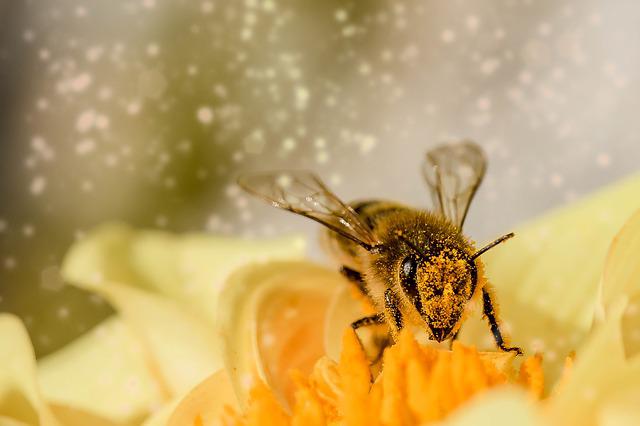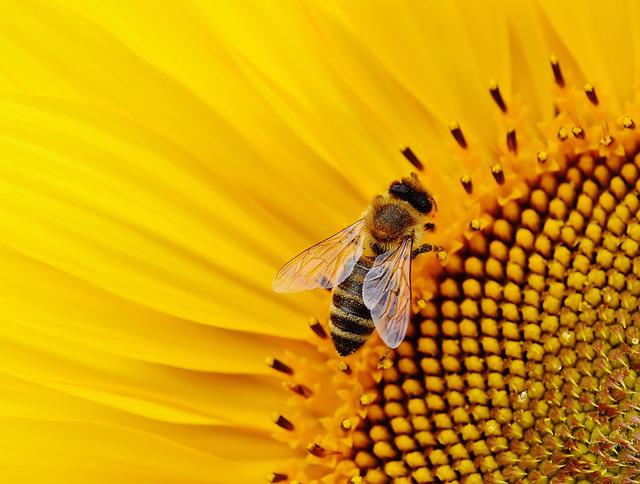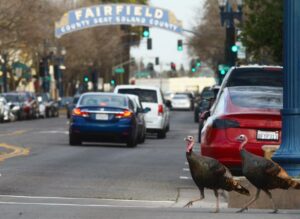
Why Do Bees Have Sticky Hair? Answer Will Surprise You
First, why do bees have sticky hair? Our Bee Friends Are Electric!
As we all know, when two objects are relatively close to each other, and when one of them has excess charge, they will repel each other. However, two objects with excessive opposite charges, one with a positive charge and the other with a negative charge, actually attract each other when they are relatively close, which may cause the objects to “stick” together.
Continue reading, and I’ll give you more information about why bees have sticky hair.
Table of Contents
Why Do Bees Have Sticky Hair?
Some of you may have heard a pop tune from 1979 called ‘Are Friends Electric?‘ by The article’s conclusion now includes a video of Gary Numan. Apparently, our “bee friends” are electric! Their hairy bodies are the cause of everything.
Pollen adheres to bee hair due to its electromagnetic properties, which functions as a mild adhesive without the use of glue.
But why and how does this operate? The justification is as follows.
It is well known that when two objects are relatively close to one another, they repel one another when one of their electric charges is in excess. However, two objects that have excess opposite electric charges, with one having a positive charge and the other a negative charge, actually attract each other when relatively near, potentially causing the objects to ‘stick’ together.
Foraging bees have been found to typically have a net positive electric charge. Things with a negative electric charge are drawn to objects with a positive electric charge. Due to its negative electric charge, pollen fits this definition. The ability of bees to detect floral electrical fields has also been demonstrated. These electrical fields serve as visual cues for the bees, drawing them to more negatively charged flowers (and pollen), and they also act as visual cues for humans.
How Do Bees Acquire Their Positive Electrical Charge?
According to a theory, the electromagnetic charge is formed when air currents move around the hairs of foraging bees.
In order to enable the adhesion of negatively charged pollen to the bee hairs, a positive electrical charge is produced by the air currents created around the bees’ hairs as they fly during foraging.

Specially Adapted Hairs
Additionally, there is yet another way to assist in pollen collection.
Many bee hairs can be identified as having branching structures when viewed under a strong microscope. These structures aid in trapping pollen as it is drawn to the bee’s furry body.
Additionally, pollen is gathered and transported back to a nest on specially adapted hairs known as scopa (pollen brush, as seen on leafcutter bees) or corbicula (pollen baskets, as seen on bumble bees and honey bees).
Read about: Why Did The Turkey Cross The Road?
Why Are Bees’ Tongues Hairy?
Hairy tongues may seem like an odd place for hair, but they are crucial to the survival of bees.
Bees release their tongues directly into the nectar they are consuming to scoop it up. With the help of the hair, bees can easily suck up the nectar they need by forming a straw- or tube-like structure with their tongue.
Fun Fact:
Hair covers the entire bee’s body, including its legs, eyes, and tongue. As they fly from flower to flower, bees drop some pollen grains behind, resulting in insect pollination, which is crucial to regional ecosystems.
Is Bee Hair Thick?
The thick hair of bees is crucial to their ability to stay warm during the winter. In order to stay warm, bees can group together during the winter. However, having thick hair also aids in keeping bees warm when they are alone.
How Come Bee Hair Is Branched?
Bees can collect pollen as they fly from flower to flower thanks to their branching hair. These branched hairs will gather any pollen they come into contact with as the bee lands on a flower. Bees have other ways of gathering pollen, but branched hairs are one of the main ways.
Bees generate a small electrostatic charge when they fly. This charge aids in drawing pollen that is nearby but not in direct contact with the hair of the bee onto the hair. Pollen can “jump” from the flower onto the branched hairs thanks to the slight charge.
Difference Between Bumblebee Hair And Honey Bee Hair
When compared to honey bees, bumblebees’ hair is thicker. This has a lot of benefits, one of which is that it enables bumblebees to forage for pollen outside when it’s too cold for honey bees to do so. Because honey bees cannot survive in cold climates, bumblebees become very important.
Numerous essential functions for bees, their food supply, and survival are carried out by their sticky hair.
Conclusion
So, why do bees have sticky hair?
In actuality, however, bees do in fact possess sticky hair that allows them to gather pollen. But there is no gluey substance covering the bee’s hair, so this stickiness has nothing to do with that.
I appreciate you reading.


